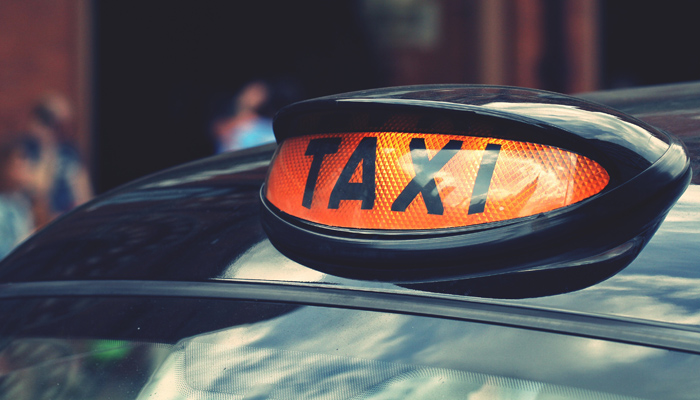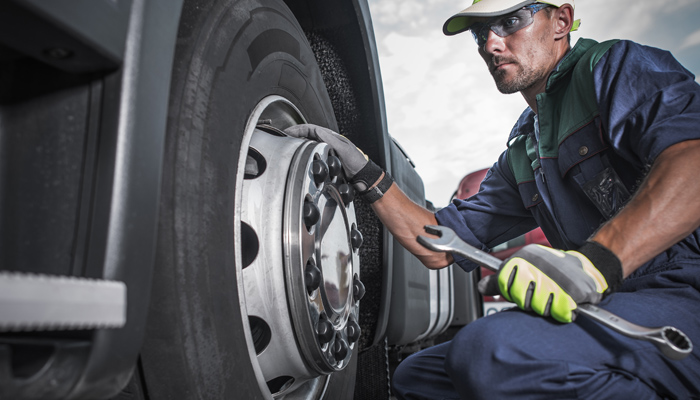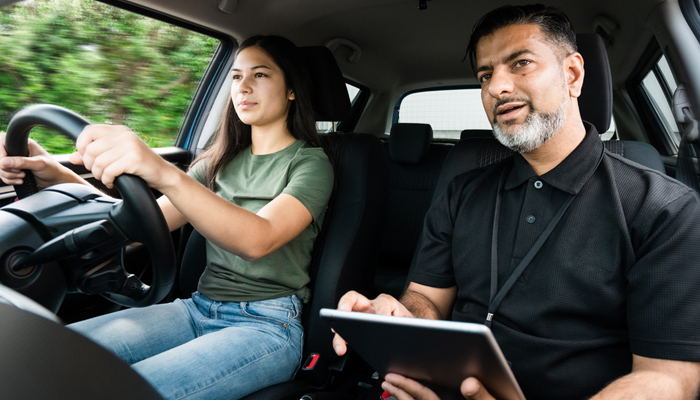Vehicle Safety Features to Reduce Your Insurance Costs
With roads growing busier and distractions growing greater, keeping drivers safe and insurance claims down is increasingly vital for transport operators. Read how new vehicle safety features can help.
In-built vehicle safety features for HGVs
Hardly a day goes by without news about driverless vehicles and their potential to eliminate the risks of human error, but it will be many years before every vehicle on the road is fully autonomous.
Greater traffic and more frequent distractions, such as mobile devices, can increase the safety threat for those behind the wheel. It is more important than ever for transport operators to address the root cause of most vehicle crashes – driver error.
Smart technology can help. In-built vehicle safety features are appearing in many of today’s new vehicles, while telematics apps can help motorists better understand their driving style and behaviour.
How can vehicle safety devices prevent driver errors?
An analysis of ‘Contributory factors for reported road accidents’ report (RAS50) produced by the Department for Transport points to human error being a factor in 94% of road collisions. Primary reasons included:
- Failing to look properly, often due to distraction: the most common contributing factor in vehicle crashes, an issue not helped in the case of many large trucks by inherent ‘blind spots’.
- Fatigue: a key cause of accidents due to its impact on concentration. Drivers that are tired may not look properly or judge the speed of other traffic correctly.
- When appointment or delivery schedules are too pressurised, as drivers may become both tired and careless.
The risk of such a moment’s tiredness or lack of concentration can be mitigated by smart technology that corrects or covers for errors. These in-built vehicle safety features include:
- Electronic stability control – improves a vehicle's stability by detecting and reducing skidding. If the driver loses control of the steering, electronic stability control applies the brakes automatically to guide the vehicle in the right direction. Braking is applied to individual wheels, preventing both oversteer and understeer.
- Lane-departure warning systems – warn drivers their vehicle is about to veer out of lane, thanks to a camera that continuously watches the markings of the road ahead.
- Advanced emergency braking systems – a radar system calculates whether, in an emergency, there is enough room to prevent a collision with the vehicle in front. If a critical limit is exceeded, the system issues a visual and acoustic signal as a warning. If the driver fails to act immediately, the brakes will be applied automatically.
Eliminating HGV driver blind spots
For larger vehicles, particularly trucks, difficulties and errors can often also arise from lack of full vision of the road and vehicles around. Technology such as after-market mirrors and digital camera systems can help considerably with the elimination of these vehicle ‘blind spots’, while properly configured telematics systems can help manage driving style and behaviour, teaching drivers how to navigate awkward roads and manoeuvres more safely.
Smart trucks and HGVs
New legislation is also driving through changes to truck and HGV design with the intention of making them inherently safer by making them semi-autonomous:
- Electronic stability control, lane departure warning systems and advanced emergency braking systems are now mandatory standard fitment for all new HGVs in the UK.
- It’s now a requirement that new trucks are fitted with a mirror that reduces blind spots on the passenger side of HGVs, thereby improving safety for cyclists.
- EU Directive 2015/719 enables vehicles to be built with a slightly longer cab profile, which improves road safety by reducing blind spots in the driver's vision, including those under the windscreen.
How do vehicle safety devices lower HGV insurance premiums?
For businesses that run vehicles, greater occupational road safety can bring significant benefits:
- Safer driving cuts costs through substantial fuel bill savings, reduced tyre wear, less vehicle and driver downtime, and less management time wasted dealing with disrupted client visits or delivery schedules.
- Cutting accident frequency and severity should lead to lower transport insurance premiums, a cut in uninsured damage and a marked reduction in the risk of brand damage resulting from a serious or fatal accident involving a company vehicle.
- It reduces considerably the risk of a serious crash that leads to a prosecution.
It is therefore worth investing in the latest vehicles, with their better design and in-built safety features, to reduce the frequency and severity of crashes, and lower your transport insurance costs.
This is a marketing article by Towergate Insurance.
HGV insurance from Towergate
We can offer tailored truck insurance with a series of options for drivers of single trucks or hauliers with fleets of up to five HGVs. Our cover ensures you have the right cover in place within a single policy, with no truck too big or too small. We can cover any truck ranging in size from 3.5t vehicles right through to trucks used to move abnormal loads.
Call for a quote on 0344 346 1418 or request an HGV insurance quote online. Alternatively, read more about our truck insurance and what we cover.
For larger vehicle fleets, we also offer fleet insurance.
All cover is subject to normal underwriting terms and conditions.
About the author
 Chris North FCII is a respected industry leader with over 40 years' experience, who has worked in the insurance industry in a variety of roles, accumulating a wealth of knowledge. He is currently Technical Manager for Towergate's motor division, providing expertise on all matters relating to motor fleet insurance, in particular haulage and self-drive hire fleets.
Chris North FCII is a respected industry leader with over 40 years' experience, who has worked in the insurance industry in a variety of roles, accumulating a wealth of knowledge. He is currently Technical Manager for Towergate's motor division, providing expertise on all matters relating to motor fleet insurance, in particular haulage and self-drive hire fleets.
Date: May 30, 2024
Category: Commercial Vehicle
















